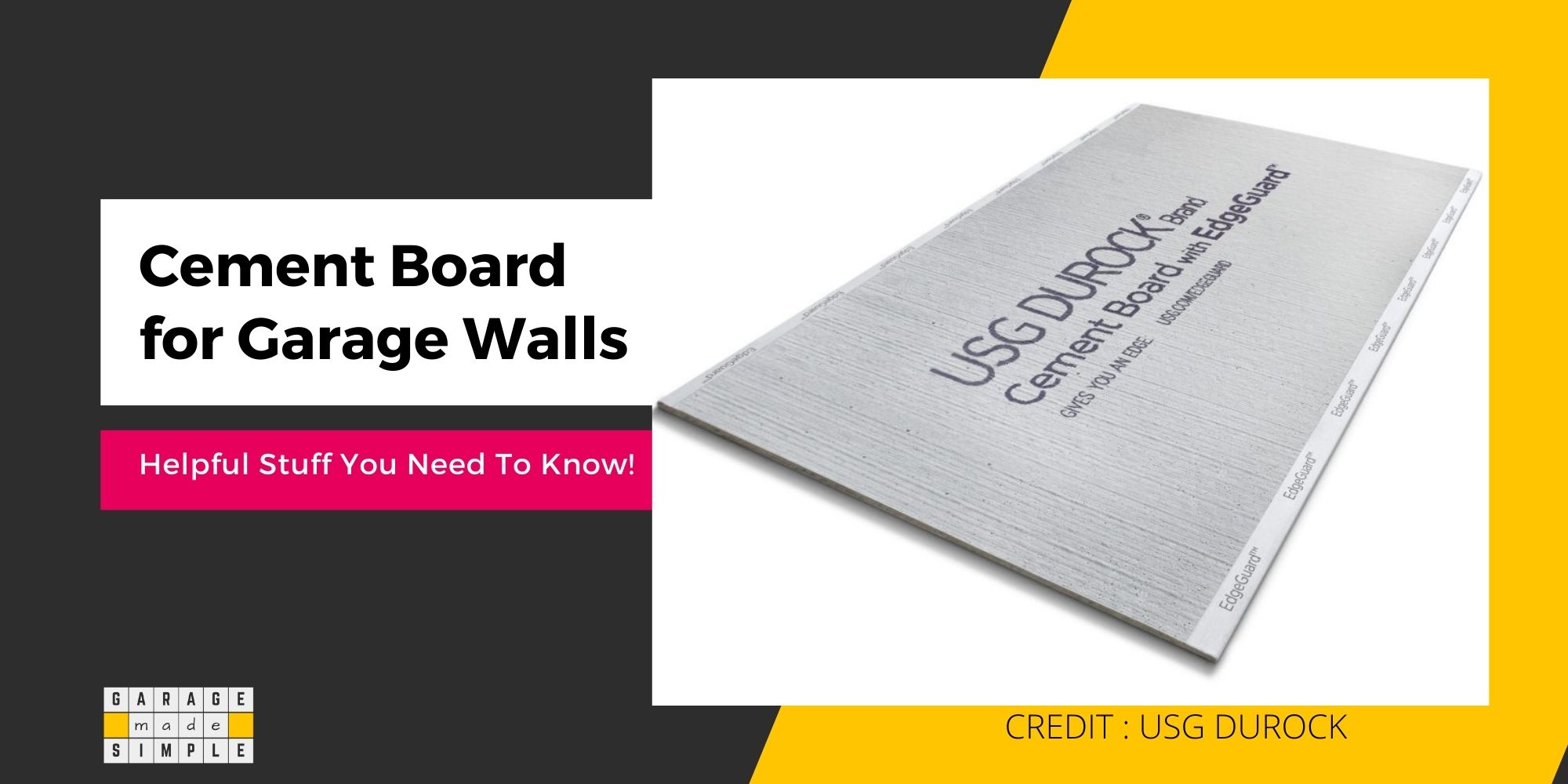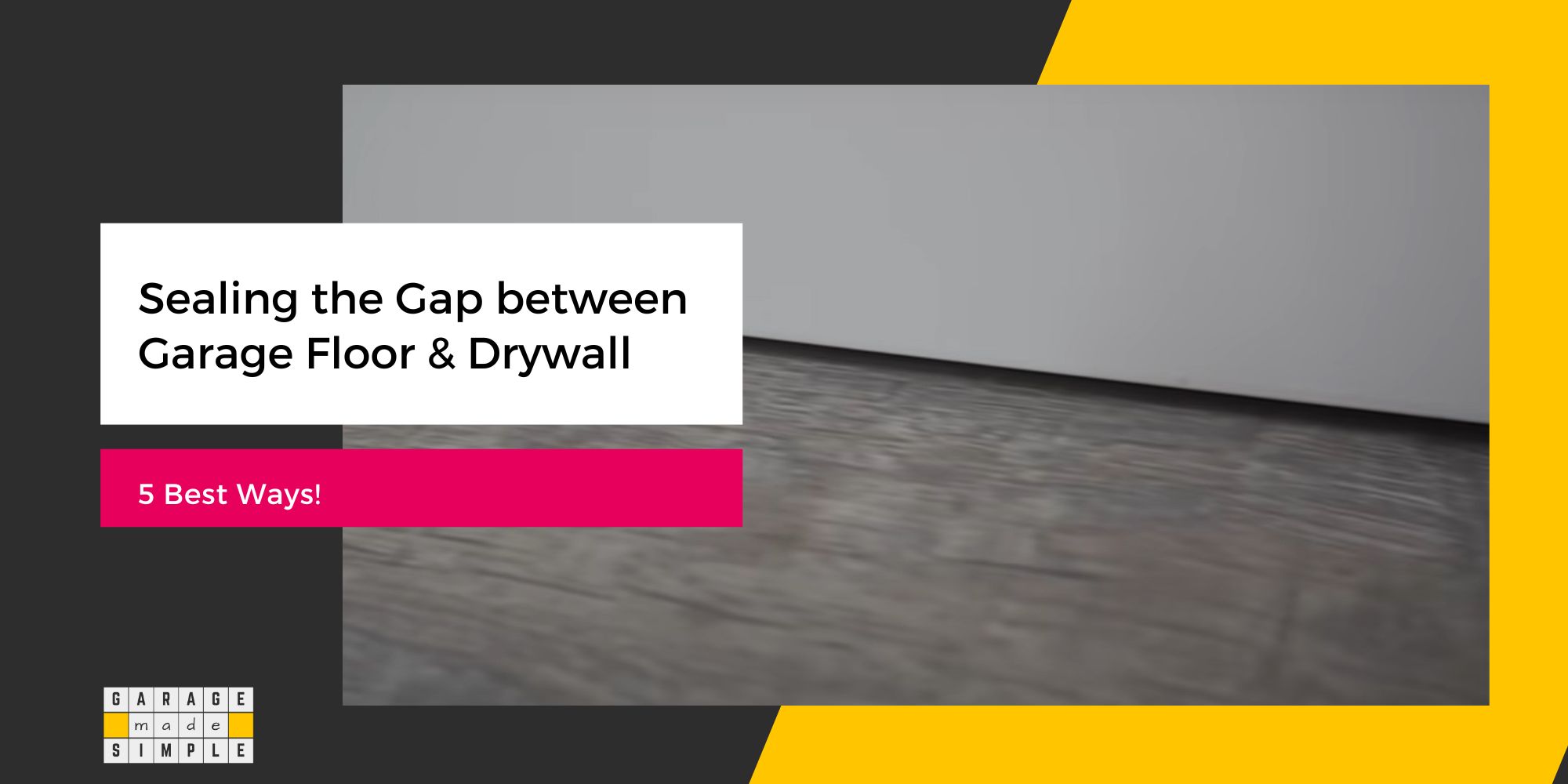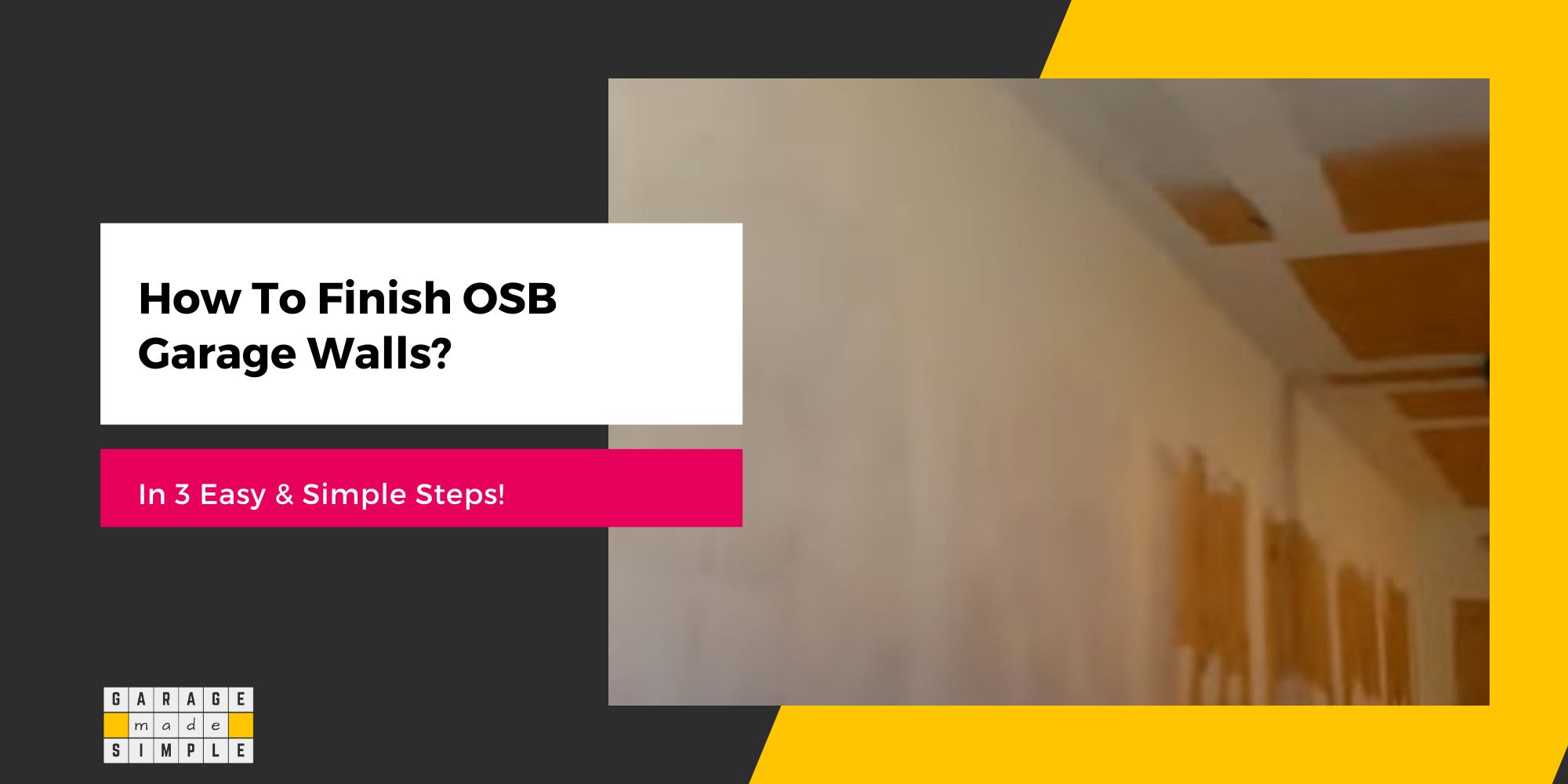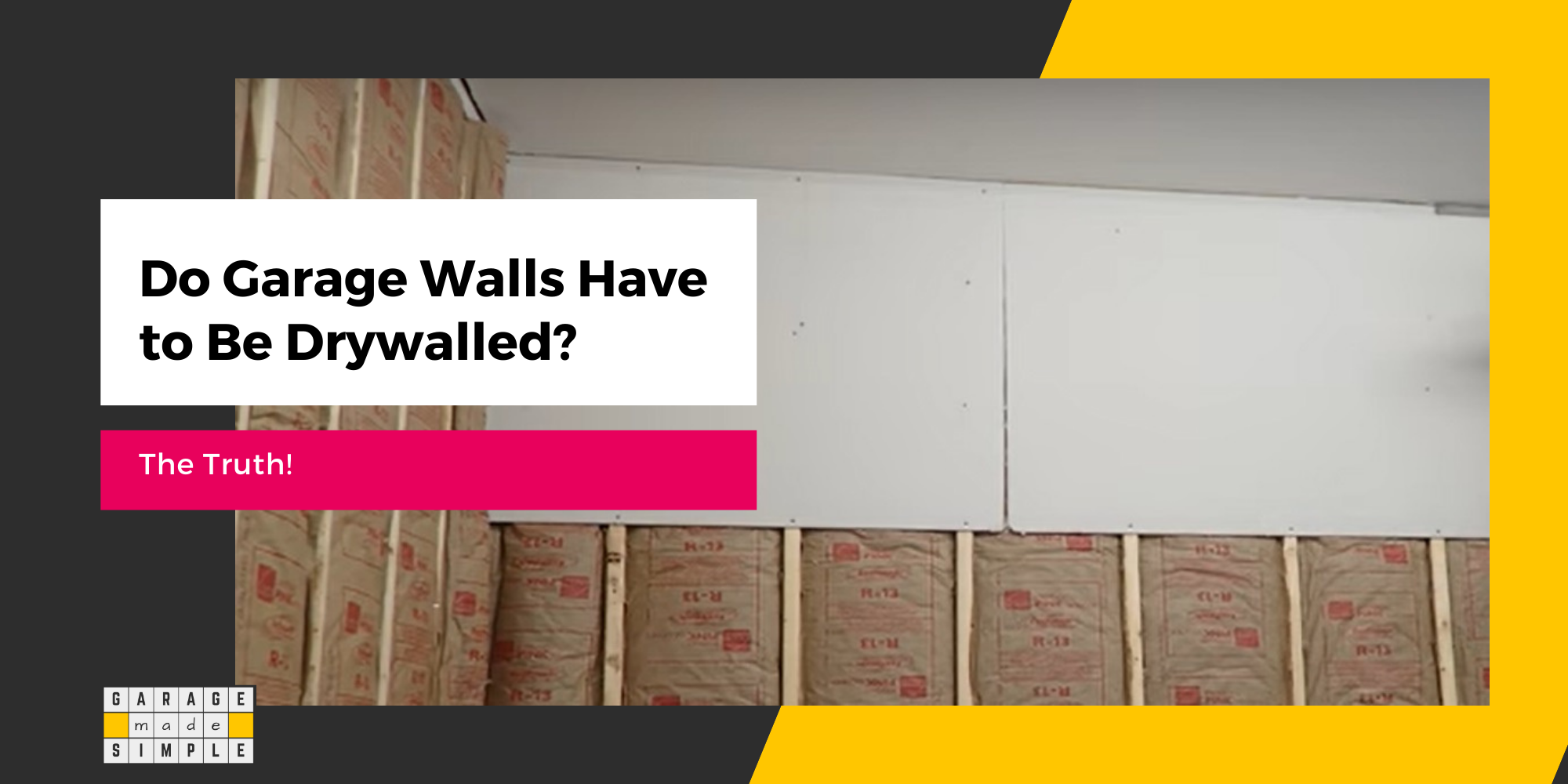Mold Resistant Drywall In Garage? (What You Need To Know!)
garagemadesimple.com is a participant in the Amazon Services LLC Associates Program, an affiliate advertising program designed to provide a means for sites to earn advertising fees by advertising and linking to Amazon.com . The website is also an affiliate of a few other brands.
Do I Need Mold Resistant Drywall in My Garage?
Drywall is an excellent choice for garage walls with many outstanding features. Unfortunately, regular drywall is not moisture or mold resistant. A damp or wet drywall can, very quickly, become a breeding ground for mold growth. So it is natural to ask, “Do I Need Mold Resistant Drywall in My Garage”?
Reduce the risk of mold growth, substantially, by using mold resistant drywall in your garage. Mold resistant drywall either uses paper which is laminated to become moisture resistant or replaces paper with fiberglass mesh which is inorganic and is not food for mold.
A garage, especially the garage floor,is quite prone to getting wet and water pooling on the garage floor is common due to:
- Moisture condensation on the floor, especially during cold nights and winter months
- Water seepage from the grade below the garage concrete floor, when precipitation is high and the water table rises
- Leakage of groundwater through the garage foundation walls
- Raindrops & snowmelt from vehicles parked in the garage
- Washing of vehicles within the garage
- Plumbing leaks & poor garage floor drainage
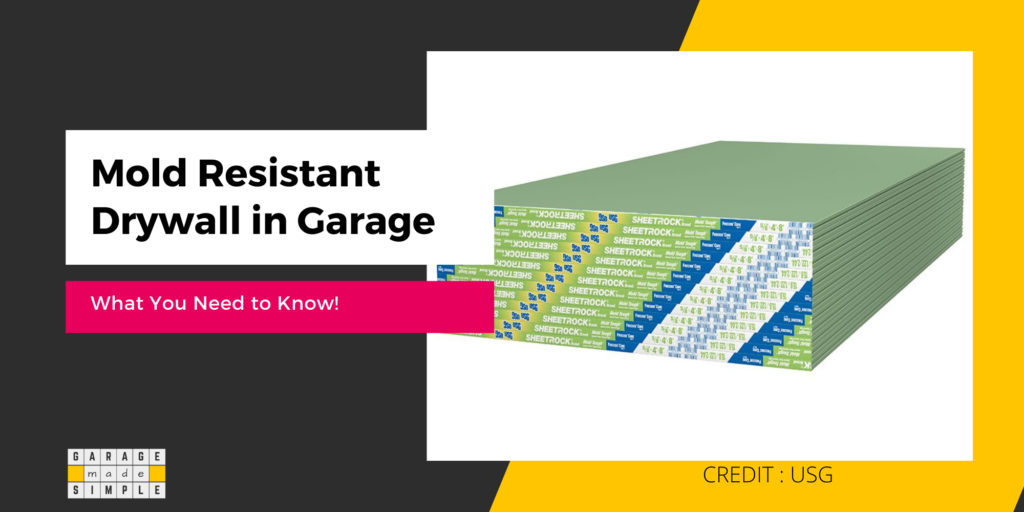
Is Mold Resistant Drywall for Garage Worth It?
A mold resistant drywall board (4’X8’) is typically 50-60% more expensive than a regular drywall board. Using mold resistant drywall for a standard 2 car garage would set you back by approximately $400 in material cost. However, you would spend only around $275, if you used regular fire resistant drywall.
So is paying an extra $125 worth it? In my opinion it is totally worth it.
Mold spores are everywhere, in the air around you. They just need three things to flourish. Oxygen, Water and Food. Just like any other living organism.
Oxygen is of course there in the atmosphere.
Drywall is powdered gypsum, sandwiched between two layers of paper. Gypsum is highly hygroscopic; it readily absorbs moisture. In fact drywall does not just get wet, it wicks the water. So even drywall that is not in contact with water gets wet.
The paper is food for the mold spores. In short, a wet drywall in the garage will almost certainly lead to growth of mold.
Mold is usually seen on the wall surface but it can grow inwards too, especially in porous drywall. Mold can destroy entire drywalls, requiring complete removal and replacement.
The adverse effects of mold on human health can include respiratory issues, such as asthma, heart problems, joint pain, migraines, fatigue and depression.
The extra $125 spent on the mold resistant drywall will
- Prevent you and your family from getting sick
- Save you additional repair cost and trouble in future
How Does Mold Resistant Drywall Work?
The main ingredient of drywall is gypsum powder. Gypsum powder is highly hygroscopic. Once wet, it is the source of water for the mold spores. However, gypsum by itself is an inorganic and inert material. It is not a food source for the mold spores.
The paper, within which the gypsum powder is sandwiched, is made of cellulose. This is the food source for the mold spores.
In mold resistant drywall, the paper facing is either coated by a wax such that the mold spores can not reach the paper or the paper is replaced by fiberglass, which is not a food source.
Do keep in mind that mold resistant drywall will resist the growth of mold spores, but there is no guarantee. Some mold may still grow as external food sources, such as dirt & grime may adhere to the mold resistant drywall.
Overall, mold resistant drywall in a garage is still a wise investment, as it will save you from time-consuming and costly mold remediation. You will also ensure that your garage is not a place which will aggravate any respiratory diseases.
What Is the Difference Between Mold Resistant and Moisture Resistant Drywall?
There was a time when mold resistant drywall and moisture resistant drywall were two different products. But now most reputed brands offer both the properties in the same product.
The reason is simple! If the drywall is moisture resistant then it will also be mold resistant. A dry drywall will not encourage the growth of mold as mold needs oxygen, water and cellulose (food) to thrive.
For example, Sheetrock® Brand Mold Tough® Panels Firecode® X (UL Type SCX) are 5/8 in. (15.9 mm) Type X panels that feature a noncombustible, moisture-resistant gypsum core that is encased in moisture-and mold-resistant, 100% recycled green face and brown back papers.
Can Mold Resistant Drywall Be Painted?
You certainly can paint over mold resistant drywall. As a matter of fact you need to paint over the mold resistant drywall to finish your garage. Just make sure you use mold resistant primer and paint.
The mold resistant drywall usually has a drab green paper face which is not particularly attractive. In addition the installation process will leave it covered with joint tapes and joint compound, which is not pretty.
Latex paint, also known as water-based acrylic paint, is most commonly used to paint drywall. Regular latex paint contains organic matter which is food for mold spores. Mold can grow rapidly on wet painted drywall, even mold resistant drywall, if it is painted with regular latex paint.
So you need to make sure that you use a good quality mold & mildew resistant primer and paint. These contain antimicrobial agents that kill the mold spores before they get a chance to grow.
It is also a good idea to use a semi gloss finish. Semi gloss finish is washable and easy to clean. Dirt & grime, which are also food sources for mold spores, can be removed with a sponge or cloth soaked in a soap solution.
I recommend using Rust-oleum Zinsser Mold Killing Primer.
Zinsser Mold Killing Primer is a water-based EPA registered fungicidal protective coating that prevents the growth of mold, mildew and other fungal organisms on the paint film and is for use on non-porous interior and exterior surfaces.
Follow it up with two coats of Rust-Oleum 02761 Perma-White Mold & Mildew Proof Interior Paint, SemiGloss Finish.
This high-performance, low-odor coating has a Lifetime durability guarantee and is perfect for moisture prone areas such as a garage. It is tintable to off-white, pastel and medium colors, so you can get your garage interiors in the color of your choice.
Thank you very much for reading the post. I do hope you found it informative and useful.

